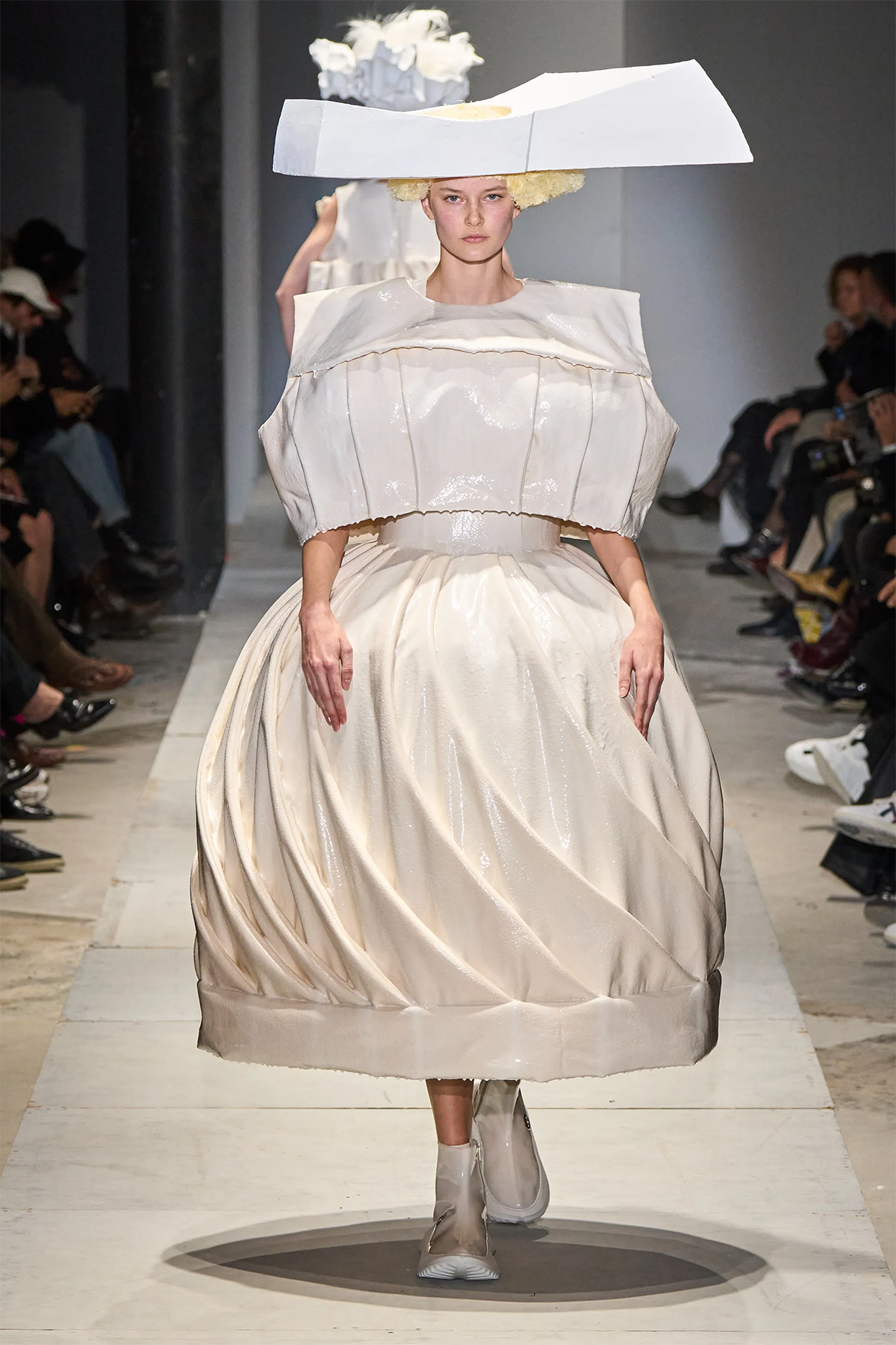White is not a colour; it’s the reflection of all light, all in one. Across cultures and runways, white marks important transitions: a bride stepping into a new life, a gesture of stillness in a saturated world, or a moment of farewell. In global fashion, white has long served as an expression of emotion. It is clean and complicated, restrained and deeply expressive.
Nothing channels clarity quite like an all-white look. It evokes freshness, effortlessness, and pause. Think of cotton or chiffon dresses caught in the breeze, or ivory tailored suits during the golden hour. White is also tactile: crisp poplin shirts, smooth satin linings, structured silhouettes. It’s ethereal and grounded at once.
From conceptual runway pieces to bridal gowns, white often signals transformation. In the West, the white wedding dress symbolises new beginnings. In Hong Kong and across much of Asia, however, white carries a different emotional charge — one rooted in mourning. The colour traditionally marks grief and transition. Funeral garments are often undyed, made from humble materials to honour the sacredness of loss. In this context, white becomes a gesture of respect.
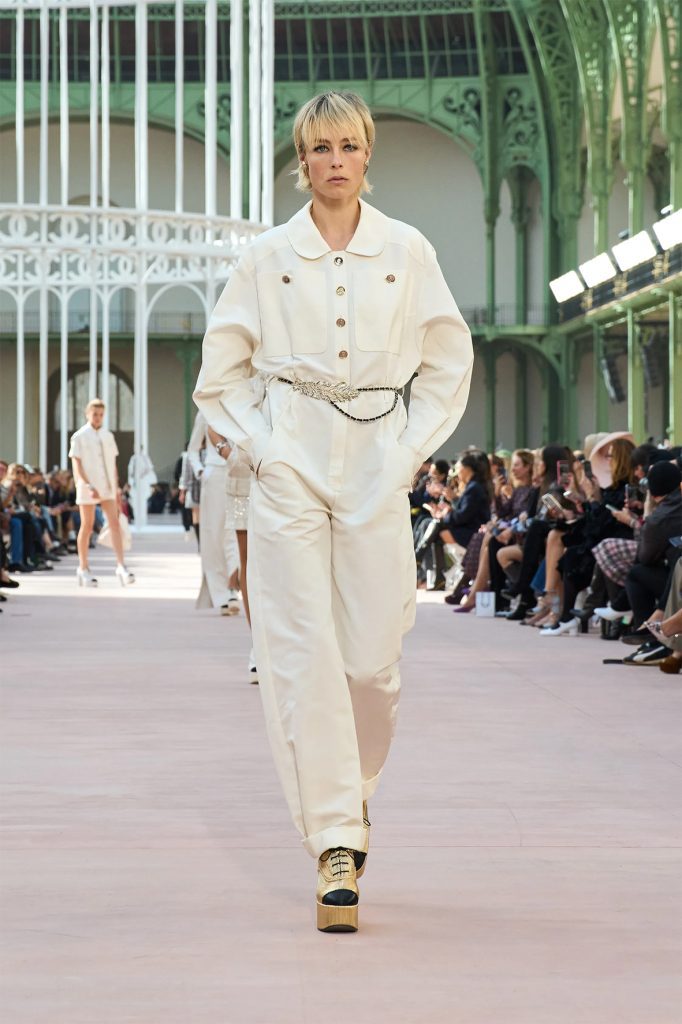
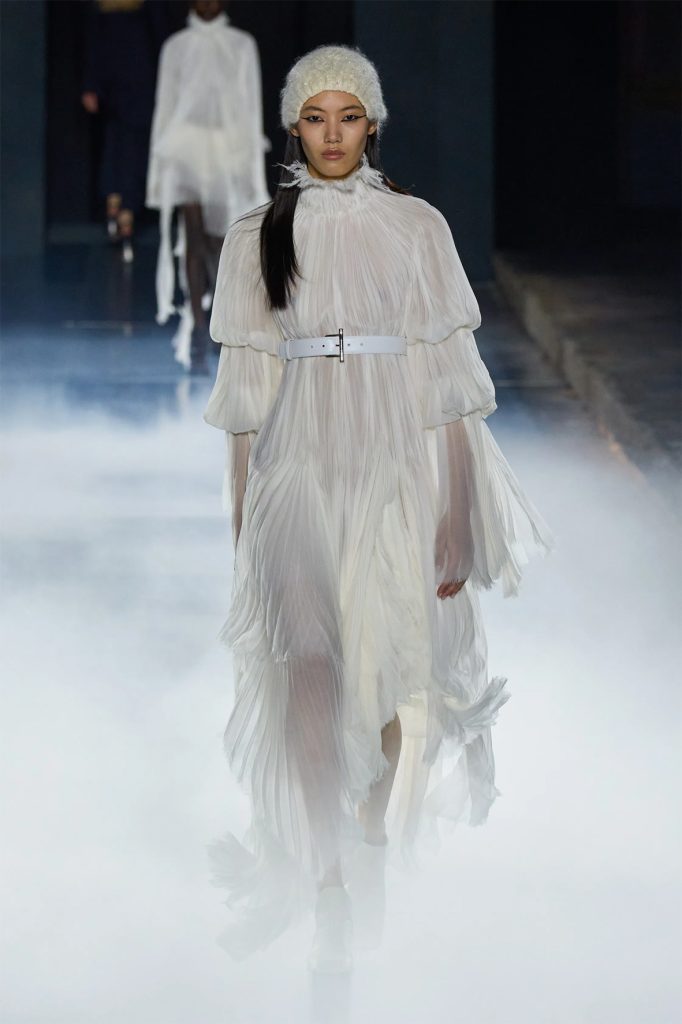
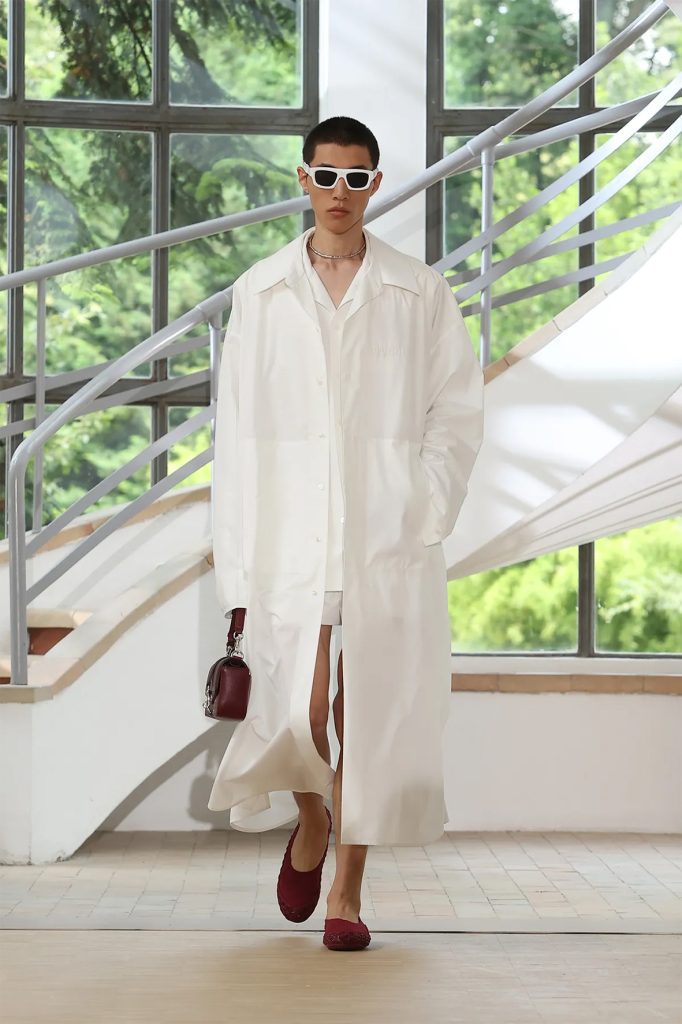
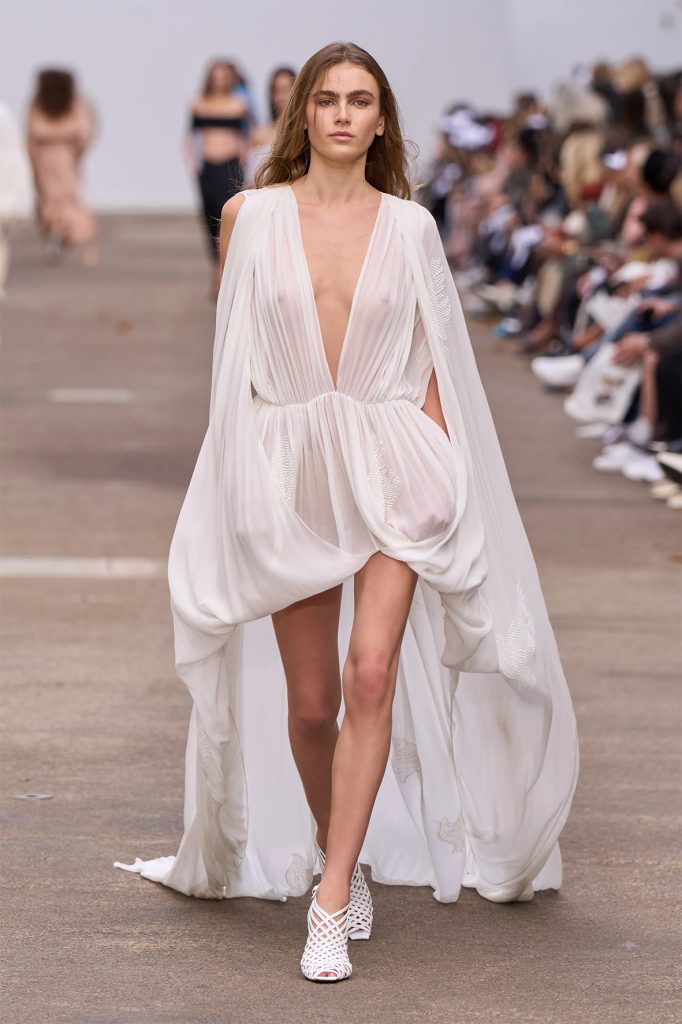
Collections SS25: Chanel, McQueen, Gucci, Stella McCartney. Image credits, see below.
Fashion always reinterprets. Rei Kawakubo’s collections for Comme des Garçons explore white as sculpture: layered, deconstructed, and voluminous. Chanel leans into classic elegance with snow-white tweeds, pearl embroidery, and tailored shapes that balance softness and structure. Ann Demeulemeester’s whites feel intimate and ghostlike, recalling both ceremony and rebellion.
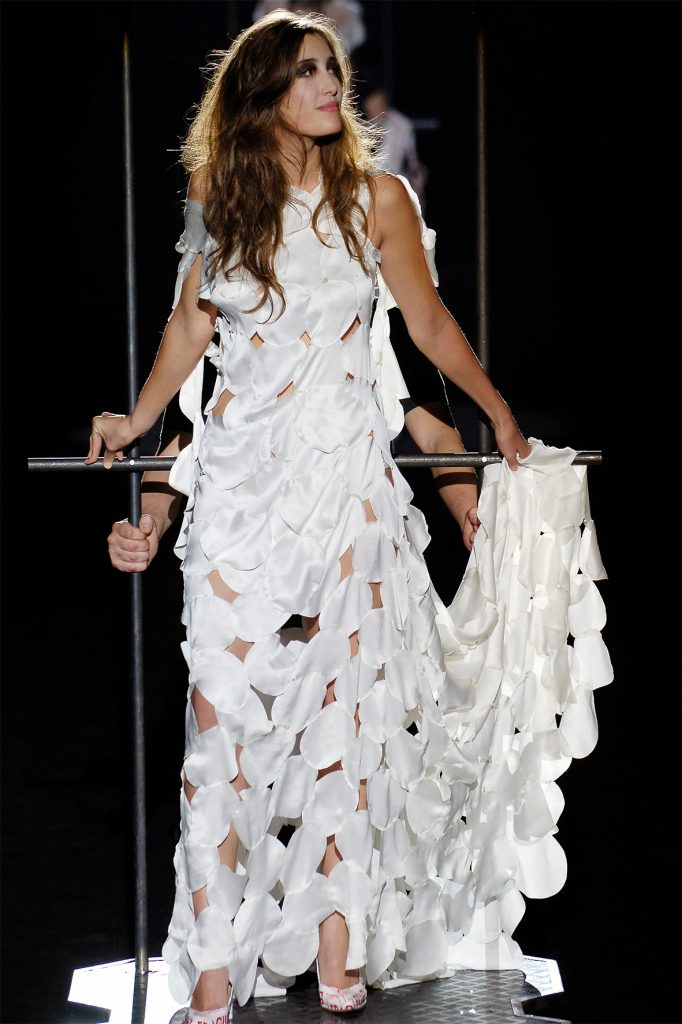
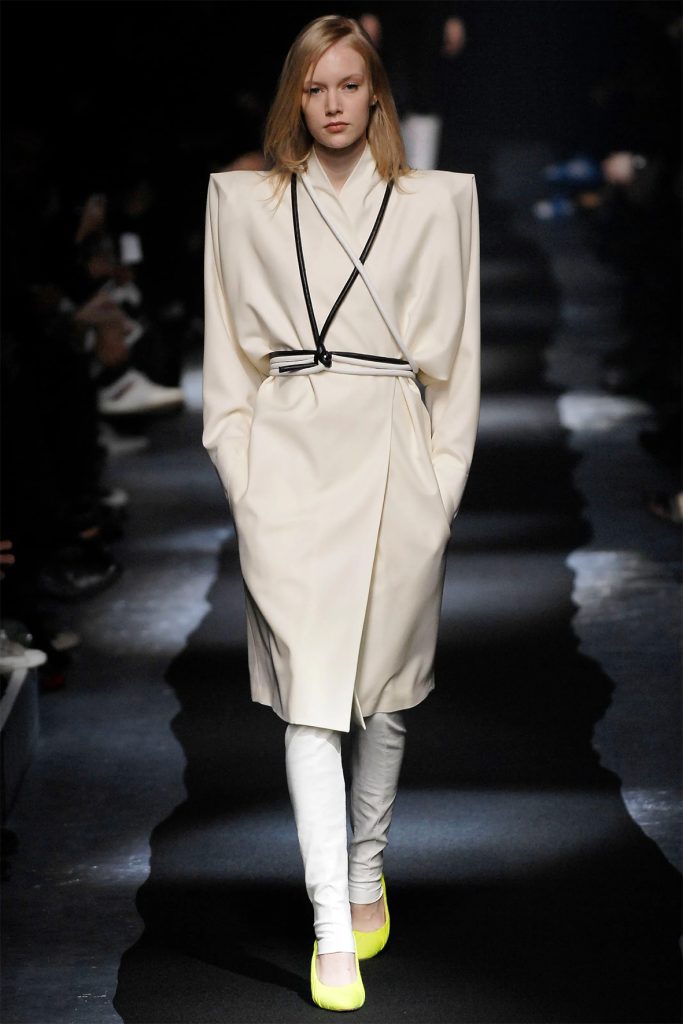
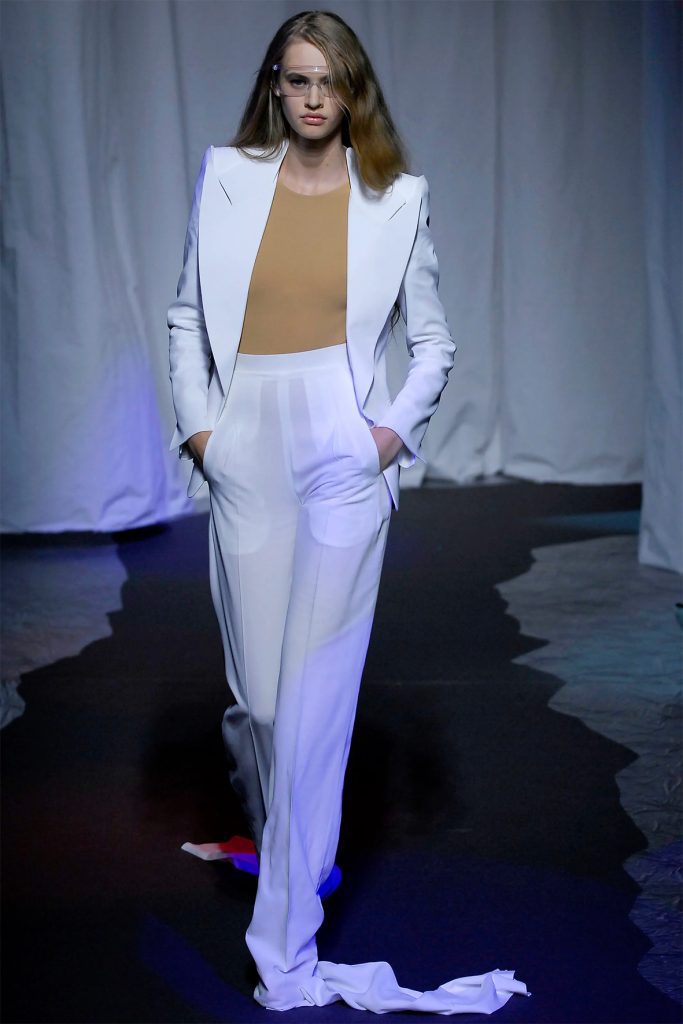
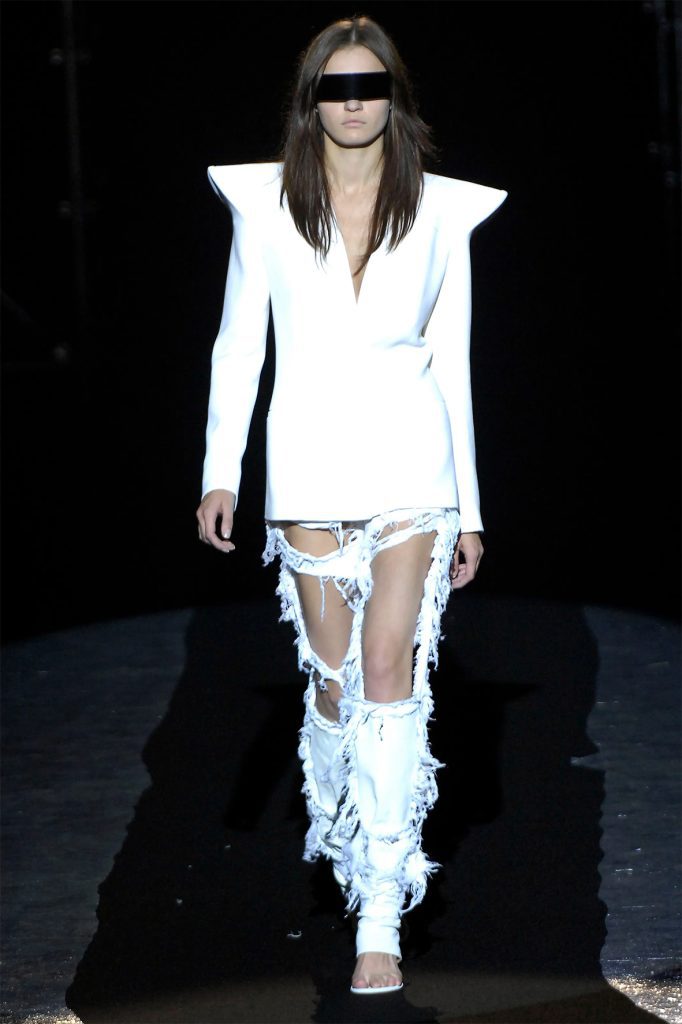
Maison Martin Margiela collections: SS2006, AW2007, SS2007, SS2008. Image credits, see below.
Martin Margiela once said, “There are no seasons anymore.” That line, to me, reads as both a reflection on fashion’s changing pace and an important manifesto. His extraordinary all-white maison was a studio where everything from walls to clocks was painted matte. White wasn’t a branding device but a working method. It was a way to strip design back to its raw material. His approach centred on process, anonymity, and a deep devotion to craft. The now-iconic split-toe tabi boots were painted white, a deliberate act to leave behind marks, traces, and presence. In his world, white made fashion personal. Each Margiela collection brings something unexpected. I’m always in awe. Below is a short visual timeline of his approach to white.
This non-colour carries contradiction. It is worn in mourning and in marriage, associated with silence yet powerful enough to fill a room. In fashion, it becomes whatever the wearer needs it to be: armour, offering, absence, invitation. It is also tied to positive emotion — happiness, joy, and hope. In Korea, white has long symbolised purity, innocence, rectitude, and temperance. It reflects a clean state of mind, free from greed. In Japan, white is considered sacred, a colour of the gods. The Emperor traditionally wore white during major Shinto rituals, a symbol of spiritual and physical purity. Across cultures, the colour holds meaning beyond ceremony. In fashion, whether cut into weightless satin or sculpted into crisp cotton, white doesn’t just reflect light. It reflects feeling. And perhaps that is what makes it eternal.
Image Credits:
Chanel, Comme des Garçons and Stella McCartney — Photography by Isidore Montag / Gorunway.com
McQueen — Photography by Daniele Oberrauch / Gorunway.com
Gucci — Courtesy of Gucci
Maison Martin Margiela — Photography by Marcio Madeira, courtesy of Maison Martin Margiela
